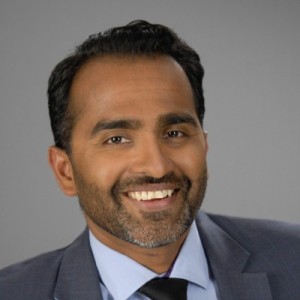- Video Library
- Ananth Ravi Presents Molli Surgical at LSI USA '23
Ananth Ravi Presents Molli Surgical at LSI USA '23

Ananth Ravi
Throughout his career, Ananth has sought to improve the patient experience. He is the only medical physicist ever to win the Human Touch Award, which recognizes a passion for improving the quality of care for cancer patients within Ontario.
Ananth has a history of peer-reviewed research focused on improving image guidance for medical procedures ranging from radiation to surgical oncology techniques. His primary focus has been on making precision surgery simpler through targeted innovation and increasing access to high-quality care. Ananth is co-inventor on numerous patents and has garnered several grants for medical device innovations.
Ananth's commitment to improving the treatment process for patients inspired him to develop the magnetic tracking technology that resulted in the creation of MOLLI Surgical. Prior to co-founding the company, he was a certified medical physicist at Sunnybrook Odette Cancer Centre and clinical operations lead, brachytherapy. Under Ananth’s leadership, Sunnybrook’s brachytherapy program became one of the highest performing in the world.
Ananth completed his doctoral studies at the University of Toronto. He has held faculty appointments at Sunnybrook Research Institute, the University of Toronto, and Ryerson University.
Ananth Ravi
Throughout his career, Ananth has sought to improve the patient experience. He is the only medical physicist ever to win the Human Touch Award, which recognizes a passion for improving the quality of care for cancer patients within Ontario.
Ananth has a history of peer-reviewed research focused on improving image guidance for medical procedures ranging from radiation to surgical oncology techniques. His primary focus has been on making precision surgery simpler through targeted innovation and increasing access to high-quality care. Ananth is co-inventor on numerous patents and has garnered several grants for medical device innovations.
Ananth's commitment to improving the treatment process for patients inspired him to develop the magnetic tracking technology that resulted in the creation of MOLLI Surgical. Prior to co-founding the company, he was a certified medical physicist at Sunnybrook Odette Cancer Centre and clinical operations lead, brachytherapy. Under Ananth’s leadership, Sunnybrook’s brachytherapy program became one of the highest performing in the world.
Ananth completed his doctoral studies at the University of Toronto. He has held faculty appointments at Sunnybrook Research Institute, the University of Toronto, and Ryerson University.

17011 Beach Blvd, Suite 500 Huntington Beach, CA 92647
714-847-3540© 2025 Life Science Intelligence, Inc., All Rights Reserved. | Privacy Policy







